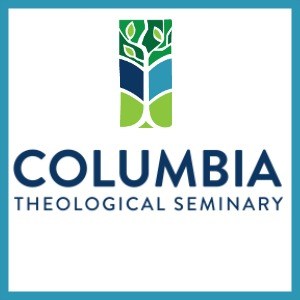His Murder Avenged, by Unveiling of Historic Marker in Abbeville Town Square
Rev. Dr. Susan K Smith, Samuel DeWitt Proctor Conference
In what is called “the birthplace and the deathbed of the Confederacy,” a historic marker remembering the brutal lynching of Andrew Crawford was unveiled in Abbeville, South Carolina, 100 years after his death.


Dr. Iva Carruthers
The Samuel DeWitt Proctor Conference, Inc. (SDPC) was a participant and partner in the event, along with the Equal Justice Initiative (EJI), conducting a service of consecration as a part of its “Sacred Memory Project” which has recently been launched. Dr. Iva Carruthers, General Secretary of SDPC, reminded all that they were standing on “holy ground.” At that service, soil from the lynching site was dropped into a jar with Crawford’s name on it by family members. The Rev. Dr. James Forbes, pastor emeritus of Riverside United Church of Christ and a member of the Board of Trustees of SDPC, delivered a message that reminded the group that black people have not disappeared in spite of the attempt to bury their history. At his prodding, the group chanted out loud, “We are here!”
 The jar containing soil from the site will be placed with the growing number of such jars being created and collected by EJI as a part of its Lynching Marker Project as it travels to lynching sites throughout the South to remember the nameless many who were lynched and left to anonymity. The jars will ultimately be placed in EJI’s National Lynching Museum, which is under construction.
The jar containing soil from the site will be placed with the growing number of such jars being created and collected by EJI as a part of its Lynching Marker Project as it travels to lynching sites throughout the South to remember the nameless many who were lynched and left to anonymity. The jars will ultimately be placed in EJI’s National Lynching Museum, which is under construction.
It was ironic that the week-end’s activities began in Jefferson Davis Park, in the shadow of the Burk-Stark Mansion, where Jefferson Davis is said to have fled after the Confederates were defeated in Richmond, Virginia at the end of the Civil War. It was at that time that Jefferson and his cabinet decided to dissolve the Confederacy. It was also in Abbeville that South Carolina, on a location in the city now known as Secession Hill, led the exodus of Southern states from the Union in protest against the Union interfering in what the South believed was its right to hold onto slavery.
This weekend, Freedom Schools were held on that land, in that park, with participants being taught the history of lynching, its connection to present-day mass incarceration, and the history of African Americans in the South as white supremacy allowed them to be massacred and forgotten without ceremony. After the day of teaching, the activities moved to the Abbeville Town Square, near the site of the actual Crawford lynching, where the service of consecration of the land took place.
The next day, the historic marker was unveiled by Bryan Stevenson, founder and executive director of EJI, as the gathered crowd cheered the moment. There were tears. There was silence. There was celebration. Crawford was immortalized, as were other black men lynched during the same spate of time.

Doria Johnson and Bryan Stevenson, founder and executive director of the Equal Justice Initiative.
The push to get the marker was largely the work of Doria Johnson, PhD candidate in history at the University of Wisconsin, and scholar-in-residence of SDPC. Crawford was her great-great grandfather. While the details of his death were often too painful for the family to even want to talk about, Johnson felt compelled to make his story known. Her great-great grandfather was a wealthy black man whose murder was followed by the Crawford family being ordered out of Abbeville. Not only did the Crawford family flee, but so did half of the black population of the city. The exodus of black families following lynchings was a common occurrence in the South, and was a major cause of the Great Migration.
Following the unveiling of the historic marker, the gathered group which included Crawford family members who now live in states as far away as California, Illinois and Pennsylvania, moved to Cypress Chapel AME Church, where Crawford was a member. Family members gave testimony of what it meant to be a Crawford, and how their heritage and history had been greatly deepened by participating in the week-end’s activities. Some said they had never heard the story of Crawford’s lynching. They were clearly moved, and vowed that they would tell the story to their children. The legacy, they said, would continue.
Young Abbeville high school students who wrote essays as part of EJI’s Racial Justice Essay Contest were awarded scholarships at the church service.
When one visits Abbeville or, in fact, any of the cities in the South where blacks were used for economic gain and brutalized by loose, white mobs, there have been, up to now, no hints of their presence or their work. The work by SDPC and EJI will change that reality, bringing America and Americans to a place of reckoning that they have been reluctant and resistant to talk about.
The project of “sacred memory” will go forward, said Dr. Carruthers. “We will no longer allow our history to remain hidden.”



















